Top Internet Abbreviations 2025: Text & Tweet Like a Pro

Written by
Ernest Bio Bogore

Reviewed by
Ibrahim Litinine
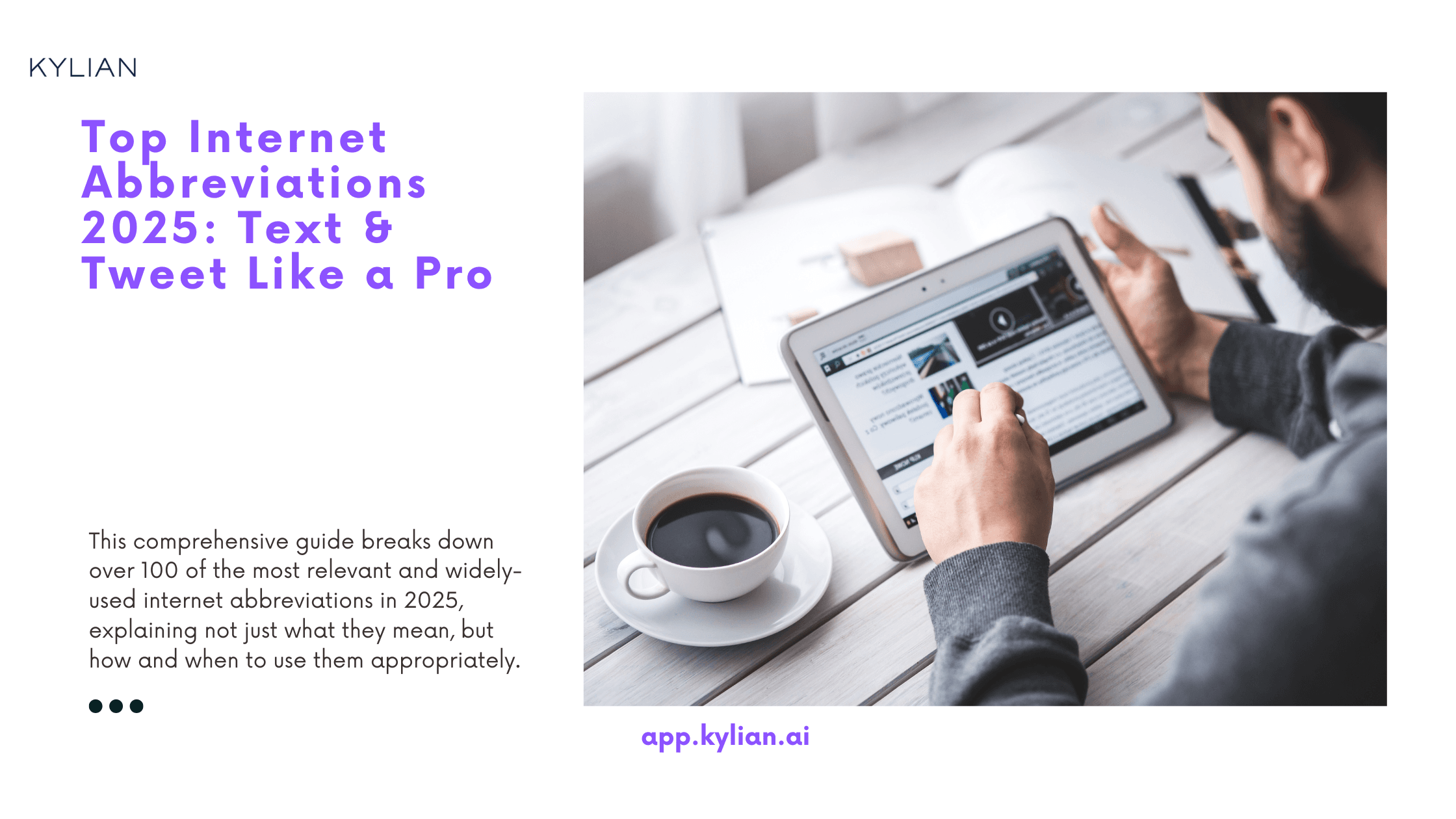
In today's digital landscape, internet abbreviations have evolved beyond mere space-savers into a sophisticated communication system that defines online culture. With their ubiquity across platforms from Twitter to WhatsApp, understanding these shorthand expressions has become essential for effective digital communication.
This comprehensive guide breaks down over 100 of the most relevant and widely-used internet abbreviations in 2025, explaining not just what they mean, but how and when to use them appropriately.
Why Internet Abbreviations Have Become Universal
Internet abbreviations emerged primarily due to practical constraints. When Twitter limited posts to 140 characters until 2017 (now 280), users naturally developed shorthand to maximize expression in minimal space. This evolution reflects our adaptation to technological parameters and the increasing pace of modern life.
Beyond efficiency, abbreviations serve multiple purposes:
- Time and effort conservation: In an era of constant communication, abbreviations reduce typing time, especially on mobile devices
- Group identity markers: Specific abbreviations function as in-group signals in particular online communities
- Privacy protection: Some abbreviations developed as codes to keep conversations private from parents or other observers
- Cultural evolution: What began with millennials has spread across generations, with even older adults now commonly using these shorthand expressions
Interestingly, what started as teen-initiated code words has transcended age barriers. Many parents and grandparents now incorporate abbreviations like LOL and BRB into their digital vocabulary, sometimes with humorous misinterpretations that have become memes themselves.
Most Common Internet Abbreviations in 2025
The most frequently used abbreviations in digital communication this year include:
- LOL: Laughing out loud
- ASAP: As soon as possible
- FYI: For your information
- G2G: Got to go
- FB: Facebook
- MSG: Message
- TTYL: Talk to you later
- IMO: In my opinion
While these eight represent the foundation of digital shorthand, they're just the beginning of a rich lexicon that continues to evolve and expand across platforms.
Categorized Internet Abbreviations for Every Situation
Expressing Emotions and Feelings
- HIFW: How I feel when
- TFW: That feeling when
- MFW: My face when
- MRW: My reaction when
- IFYP: I feel your pain
- TNTL: Trying not to laugh
- JK: Just kidding
- IDC: I don't care
- ILY: I love you
- IMU: I miss you
- ADIH: Another day in hell
- ZZZ: Sleeping, bored, tired
- WYWH: Wish you were here
- TIME: Tears in my eyes
- BAE: Before anyone else
- SSDD: Same stuff, different day
- QQ: Crying (originated from gaming culture, resembling crying eyes)
- FIMH: Forever in my heart
- BSAAW: Big smile and a wink
- BWL: Bursting with laughter
- LMAO: Laughing my ass off
- BFF: Best friends forever
- CSL: Can't stop laughing
- ROFL: Rolling on floor laughing
- FOFL: Falling on floor laughing (newer variant)
Expressing Opinion and Reaction
- IMO: In my opinion
- IMHO: In my humble opinion
- OMDB: Over my dead body
- NTH: Nice to have
- POV: Point of view
- TBH: To be honest
- FTW: For the win
- WTF: What the f***
- FTL: For the loss
- YNK: You never know
- SMH: Shaking my head
- SRSLY: Seriously
- YGTR: You got that right
- GMTA: Great minds think alike
- CWOT: Complete waste of time
- AYMM: Are you my mother?
- NMP: Not my problem (growing in popularity in 2025)
- WDYT: What do you think? (increasingly common in professional settings)
Disclaimers and Contextual Information
- IANAL: I am not a lawyer
- TINLA: This is not legal advice
- AFAIK: As far as I know
- AFAIR: As far as I remember
- AFAIC: As far as I'm concerned
- ASL: Age, sex, location
- AAMOF: As a matter of fact
- FWIW: For what it's worth
- YMMV: Your mileage may vary
- IIRC: If I remember correctly
- DM: Direct message
- AFAICT: As far as I can tell
- TL;DR: Too long; didn't read
- ToS;DR: Terms of service; didn't read
- NAD: Not a doctor (increasingly used in health discussions)
- IME: In my experience (gained popularity in advice forums)
Attention-Grabbing Phrases
- IRL: In real life
- TIL: Today I learned
- SOML: Story of my life
- EMBM: Early morning business meeting
- J4F: Just for fun
- JSYK: Just so you know
- FAWC: For anyone who cares
- RLRT: Real life retweet
- OH: Overheard
- WUZUP: What's up?
- CS: Career suicide
- DWH: During work hours
- ICYMI: In case you missed it (increasingly used in professional communications)
- POV: Point of view (particularly popular in content creation)
- LMK: Let me know (common in workplace communications)
Notifications, Wishes, Greetings, and Closings
- OMW: On my way
- GRATZ: Congratulations
- GL: Good luck
- IDK: I don't know
- TTYL: Talk to you later
- BRB: Be right back
- W8: Wait
- NFS: Not for sale
- B4N: Bye for now
- B@U: Back at you
- BBBG: Bye bye be good
- BBIAS: Be back in a sec
- RUOK: Are you OK?
- CYT: See you tomorrow
- DBMIB: Don't bother me I'm busy
- DM: Direct message
- GFN: Gone for now
- AFK: Away from keyboard
- HBD: Happy birthday (increasingly common across platforms)
- TGIF: Thank God it's Friday (returning to popularity)
Privacy-Protection Codes
This category has evolved significantly as family dynamics changed with digital natives becoming parents themselves:
- PAW: Parents are watching
- PITR: Parent in the room
- PBB: Parent behind back
- POMS: Parent over my shoulder
- KPC: Keeping parents clueless
- PAH: Parent at home
- KOL: Kid over looking (new in 2025, as digital native parents develop their own codes)
- MKDR: My kid doesn't realize (trending among millennial parents)
Warnings and Recommendations
- NSFW: Not safe for work
- NSFL: Not safe for life
- SFW: Safe for work
- GRAS: Generally recognized as safe
- NBD: Not big deal
- OC: Original content
- 4AO: For adults only
- OP: Original poster
- PPL: People
- ICYMI: In case you missed it
- JIC: Just in case
- NAGI: Not a good idea
- GOI: Get over it
- RBTL: Read between the lines
- AYOR: At your own risk
- DIY: Do it yourself
- E123: Easy as one, two, three
- GAHOY: Get a hold of yourself
- TTYN: Talk to you never (used for indefinite goodbyes)
- OOMF: One of my followers/friends (common on social platforms)
Asking for Favors or Advice
- TMB: Tweet me back
- WTPA: Where the party at?
- DAE: Does anyone else?
- PRT: Please retweet
- PTB: Please text back
- TIA: Thanks in advance
- BUMP: Bring up my post
- AITA: Am I the asshole? (from Reddit, now widespread)
- ELI5: Explain like I'm five (simplified explanations)
- ISO: In search of (common in buying/selling contexts)
The Rise of Voice Message Abbreviations in 2025
A new trend emerging in 2025 is the growing use of abbreviations specifically for voice messages and audio-focused platforms:
- STAM: Sent this as message (indicating voice preference)
- VNCOMG: Voice note coming (alerting recipient to switch audio on)
- ASMRT: Audio summary required, text? (requesting text version)
- HWTS: Hear when time suits (no rush to listen to voice note)
- TMTL: Too much to listen (requesting text alternative)
As voice messages continue gaining popularity, these abbreviations bridge the gap between text and audio communication styles.
Generational Differences in Abbreviation Usage
The way different generations use internet abbreviations varies significantly:
- Gen Z (born 1997-2012): Creates and adopts new abbreviations rapidly, often using them ironically or with multiple layers of meaning
- Millennials (born 1981-1996): Comfortable with most abbreviations but may lag behind newest trends
- Gen X (born 1965-1980): Typically uses foundational abbreviations (LOL, BRB) but might misapply newer forms
- Baby Boomers (born 1946-1964): Often use abbreviations more literally and less frequently, sometimes with unintentional humor
These generational differences sometimes lead to communication gaps or humorous misunderstandings. For example, many older users interpret "LOL" as "lots of love" rather than "laughing out loud," creating potentially awkward situations in serious conversations.
Professional Context: When to Use Abbreviations
Internet abbreviations have increasingly entered professional communication, but knowing when they're appropriate remains crucial:
Generally Acceptable in Professional Settings:
- FYI, ASAP, EOD (end of day), COB (close of business)
- TL;DR (in internal communications)
- IMO/IMHO (in less formal emails or chats)
Best Avoided in Professional Communication:
- Emotional expressions (LOL, LMAO, SMH)
- Complex or obscure abbreviations that might confuse colleagues
- Any abbreviations in formal external communication or legal documents
The key is understanding your workplace culture. Tech startups typically embrace abbreviations more readily than traditional industries like law or finance.
Industry-Specific Abbreviations
Different industries have developed their own specialized abbreviations:
Tech and Software Development:
- ELI5: Explain like I'm five
- RTFM: Read the freaking manual
- PEBCAK: Problem exists between chair and keyboard
Marketing and Social Media:
- CTA: Call to action
- UGC: User-generated content
- KOL: Key opinion leader
Finance:
- HODL: Hold on for dear life (cryptocurrency)
- FOMO: Fear of missing out
- ATH: All-time high
Knowing industry-specific abbreviations can be crucial for specialized professional communication.
Why Abbreviations Matter for Digital Literacy
Understanding internet abbreviations has become an essential aspect of digital literacy for several reasons:
- Social inclusion: Being familiar with common abbreviations helps prevent feeling excluded from online conversations
- Avoiding misunderstandings: Interpreting abbreviations incorrectly can lead to communication breakdowns
- Efficient communication: Using appropriate abbreviations can streamline digital exchanges
- Cultural awareness: Abbreviations often reflect broader cultural shifts and movements
As our communication continues shifting to digital platforms, the ability to navigate these shorthand expressions becomes increasingly valuable across personal and professional contexts.
How to Learn New Abbreviations
Staying current with evolving internet language requires:
- Context observation: Pay attention to how abbreviations are used in natural conversations
- Ask directly: When unsure, simply ask what an abbreviation means
- Online resources: Follow social media accounts that track language trends
- Frequency recognition: Focus on learning the most commonly used abbreviations first
- Practice: Incorporate new abbreviations into your own communication to solidify understanding
Remember that internet language evolves rapidly, so continuous learning is essential for staying current.
Learn Any Language with Kylian AI
Private language lessons are expensive. Paying between 15 and 50 euros per lesson isn’t realistic for most people—especially when dozens of sessions are needed to see real progress.
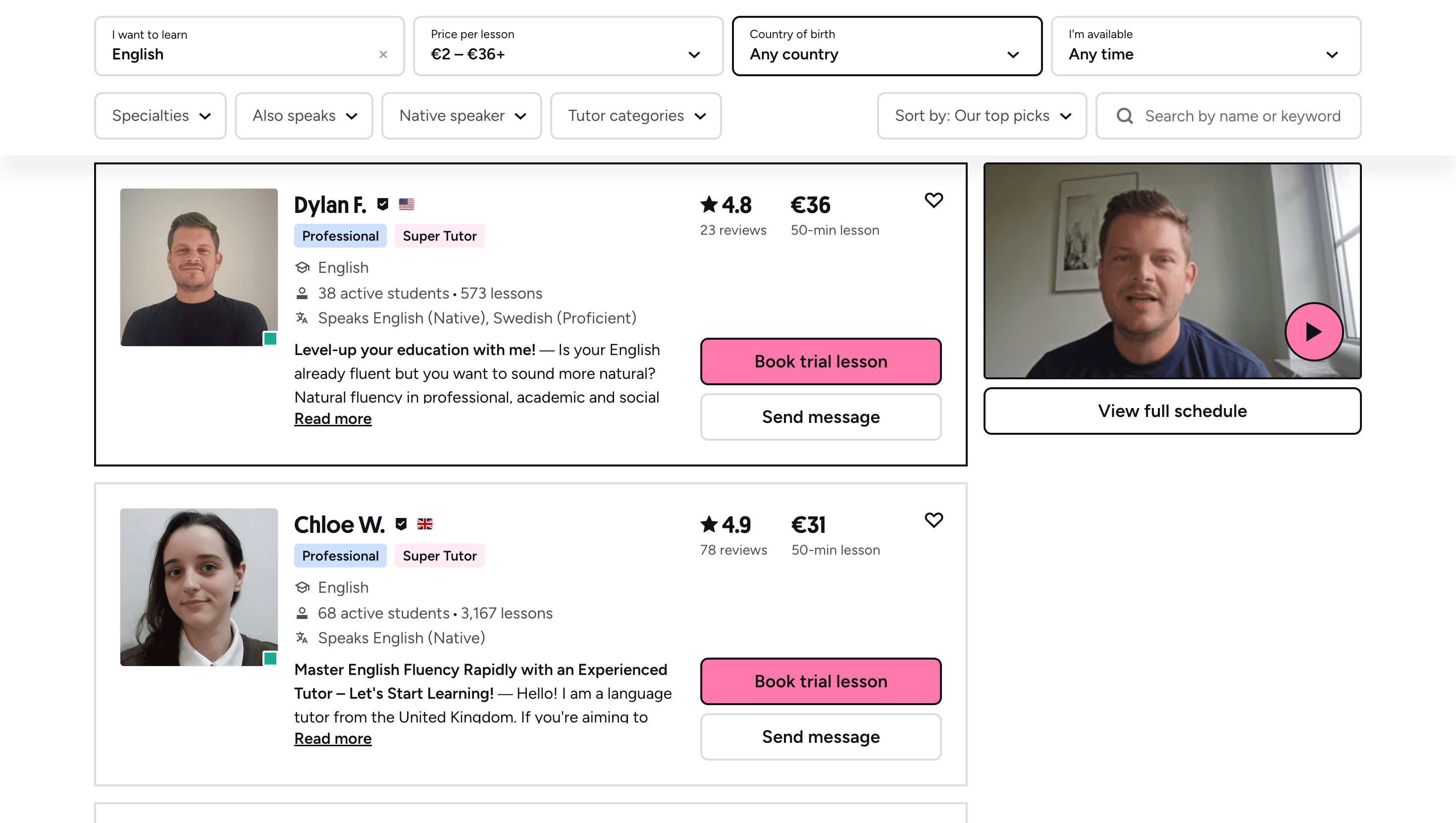
Many learners give up on language learning due to these high costs, missing out on valuable professional and personal opportunities.
That’s why we created Kylian: to make language learning accessible to everyone and help people master a foreign language without breaking the bank.
To get started, just tell Kylian which language you want to learn and what your native language is
Tired of teachers who don’t understand your specific struggles as a French speaker? Kylian’s advantage lies in its ability to teach any language using your native tongue as the foundation.
Unlike generic apps that offer the same content to everyone, Kylian explains concepts in your native language (French) and switches to the target language when necessary—perfectly adapting to your level and needs.
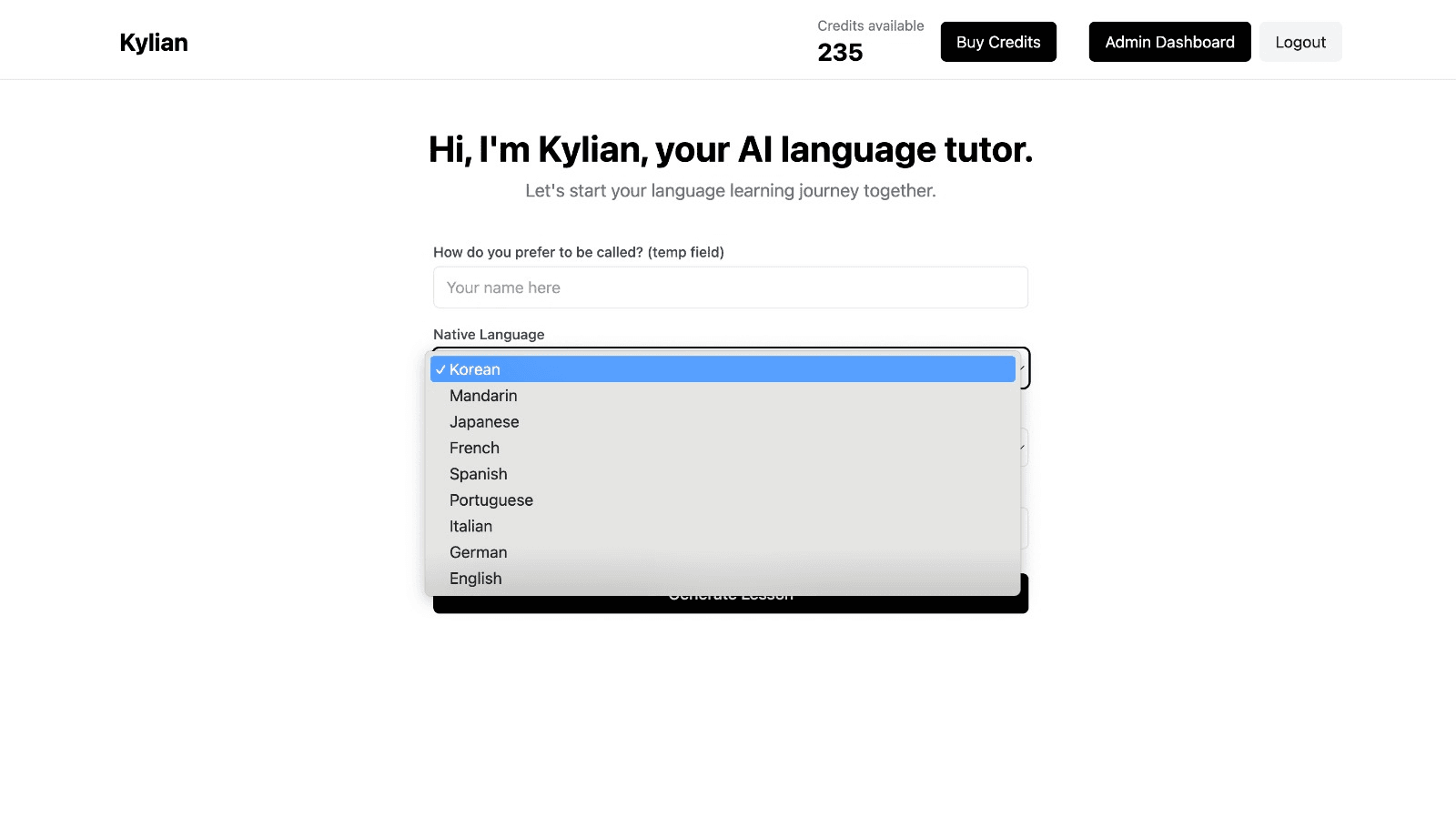
This personalization removes the frustration and confusion that are so common in traditional language learning.
Choose a specific topic you want to learn
Frustrated by language lessons that never cover exactly what you need? Kylian can teach you any aspect of a language—from pronunciation to advanced grammar—by focusing on your specific goals.
Avoid vague requests like “How can I improve my accent?” and be precise: “How do I pronounce the R like a native English speaker?” or “How do I conjugate the verb ‘to be’ in the present tense?”
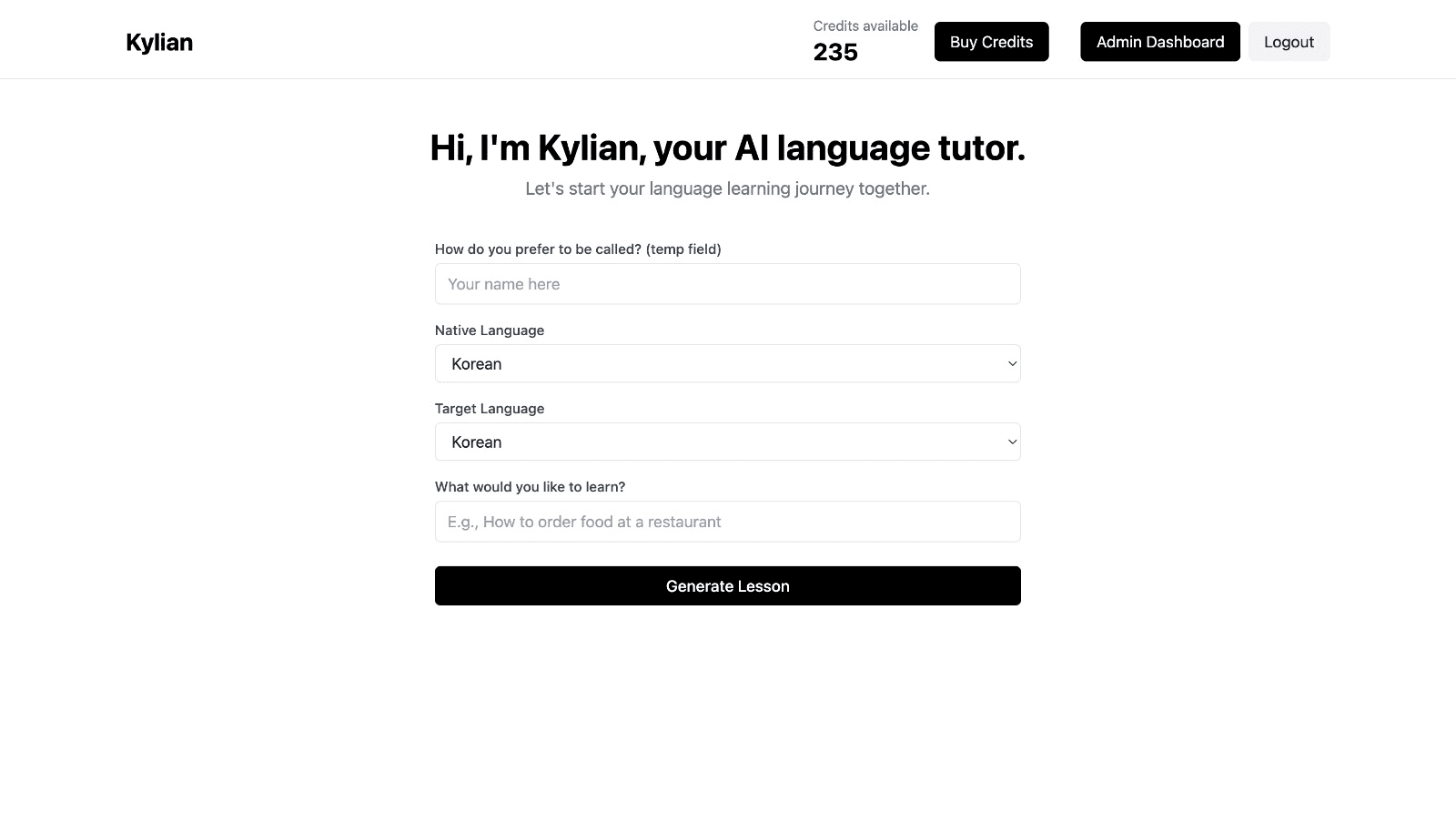
With Kylian, you’ll never again pay for irrelevant content or feel embarrassed asking “too basic” questions to a teacher. Your learning plan is entirely personalized.
Once you’ve chosen your topic, just hit the “Generate a Lesson” button, and within seconds, you’ll get a lesson designed exclusively for you.
Join the room to begin your lesson
The session feels like a one-on-one language class with a human tutor—but without the high price or time constraints.
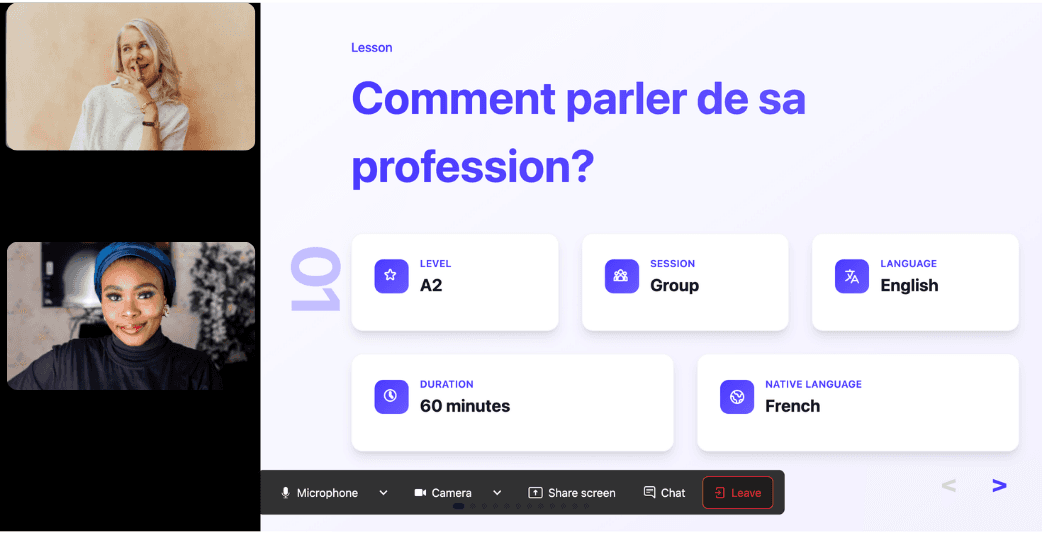
In a 25-minute lesson, Kylian teaches exactly what you need to know about your chosen topic: the nuances that textbooks never explain, key cultural differences between French and your target language, grammar rules, and much more.
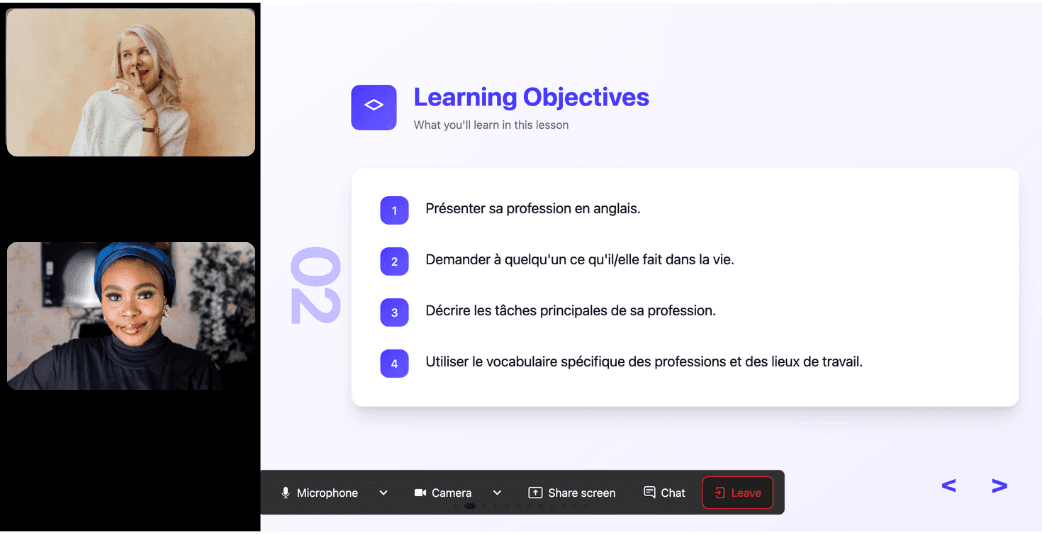
Ever felt frustrated trying to keep up with a native-speaking teacher, or embarrassed to ask for something to be repeated? With Kylian, that problem disappears. It switches intelligently between French and the target language depending on your level, helping you understand every concept at your own pace.
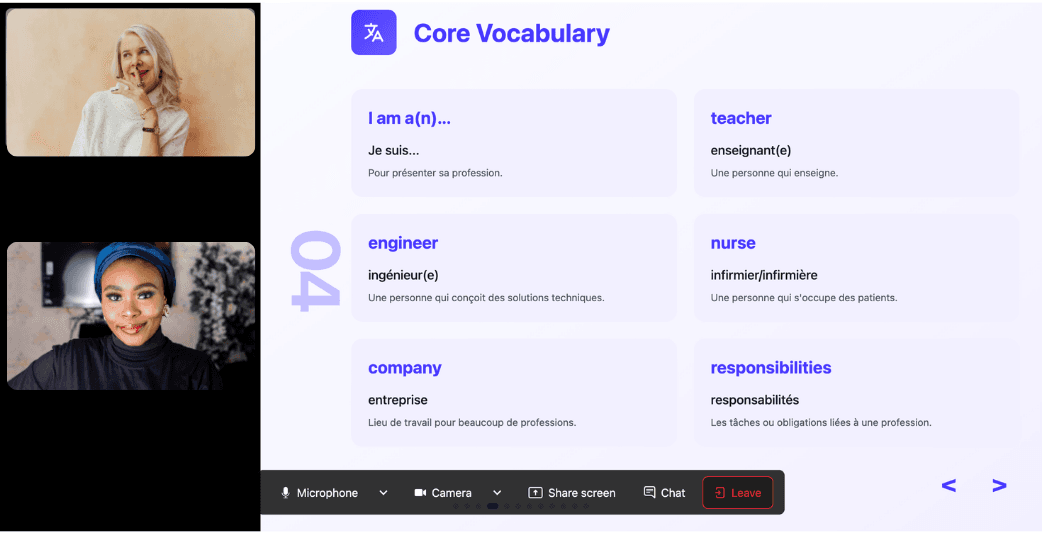
During the lesson, Kylian uses role-plays, real-life examples, and adapts to your learning style. Didn’t understand something? No problem—you can pause Kylian anytime to ask for clarification, without fear of being judged.
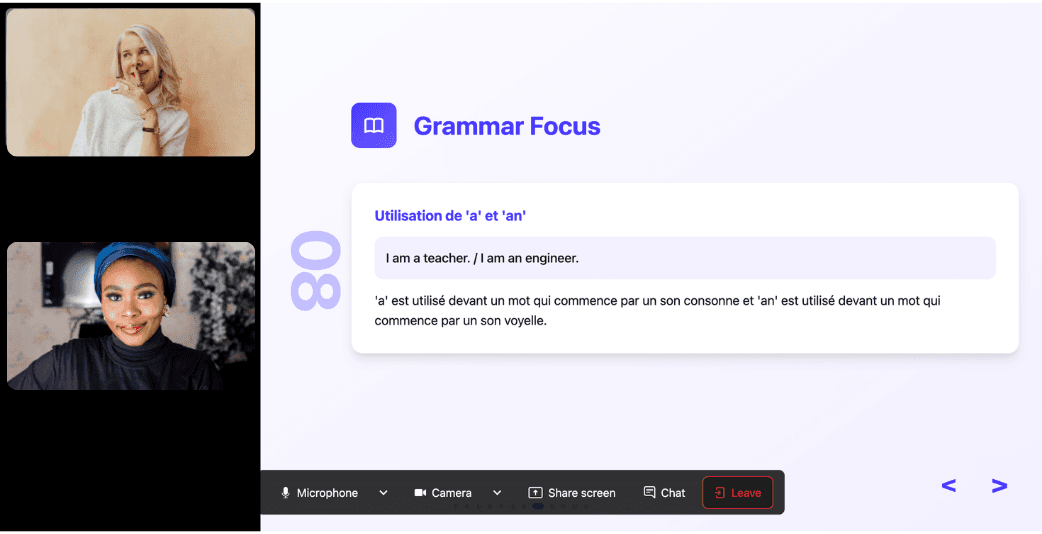
Ask all the questions you want, repeat sections if needed, and customize your learning experience in ways traditional teachers and generic apps simply can’t match.
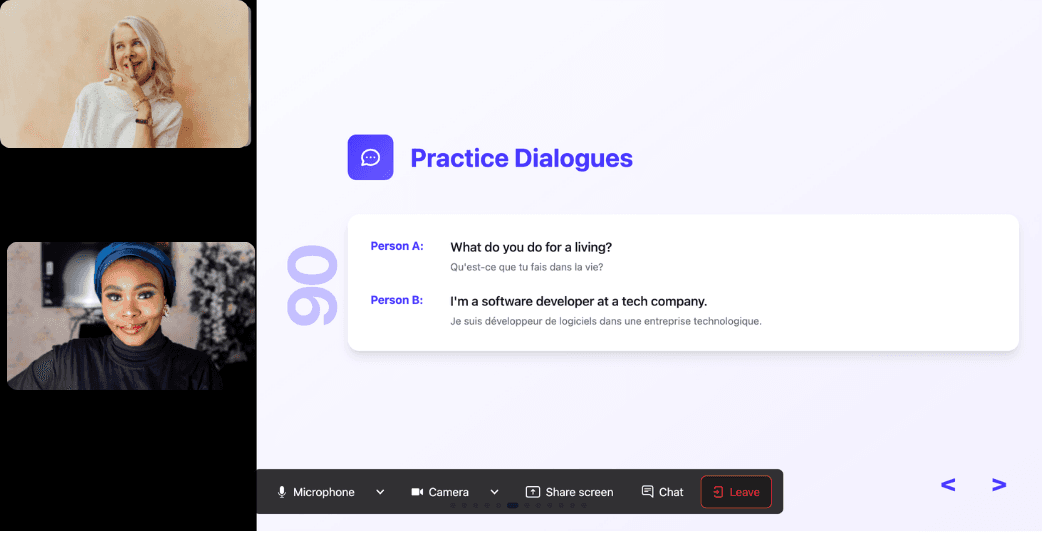
With 24/7 access at a fraction of the cost of private lessons, Kylian removes all the barriers that have kept you from mastering the language you’ve always wanted to learn.
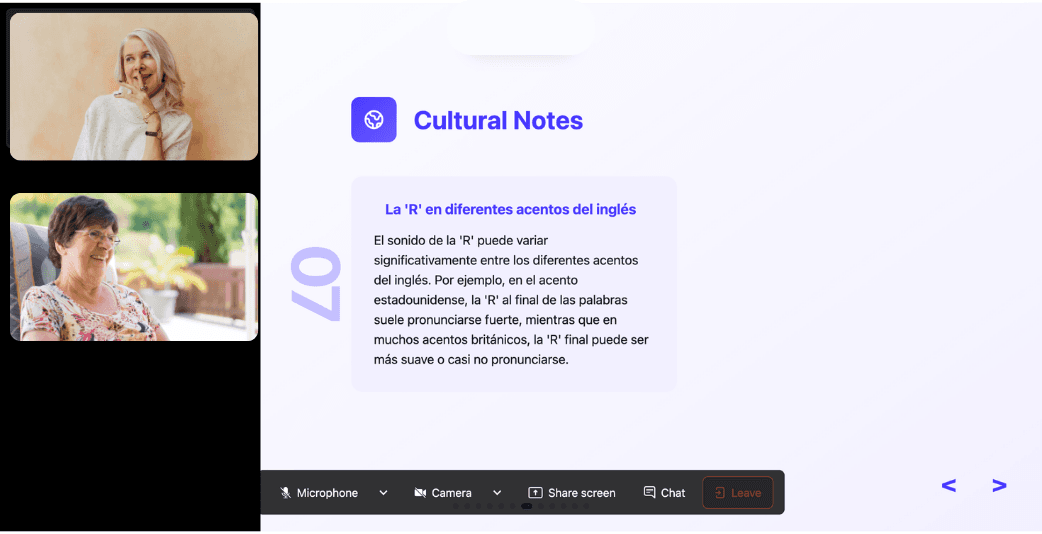
Similar Content You Might Want To Read

Master French Conjugation: Verbs Every Learner Must Know
French verb conjugation represents the most formidable challenge for many language learners. The mere mention of these three words can trigger anxiety in even the most dedicated students. But why does mastering these patterns matter so profoundly? Effective communication in French hinges on your ability to manipulate verbs correctly across various tenses. While regular verbs follow predictable patterns, irregular verbs demand individual attention and memorization. This article dissects the 20 most frequently used French verbs, providing clear conjugation patterns across four critical tenses: present (présent), present perfect (passé composé), imperfect (imparfait), and future (futur simple). By focusing on these high-frequency verbs, you'll establish a foundation that supports approximately 80% of everyday French communication. Let's transform this intimidating aspect of French into your linguistic strength.

Master Italian Verb Conjugation: Regular & Irregular Verbs
Mastering Italian verb conjugation unlocks genuine expression and cultural connection, transforming you from a basic communicator to a fluid conversationalist. Whether you're just beginning your language journey, refining existing skills, or simply curious about the linguistic mechanics of this beautiful language, understanding how to properly conjugate Italian verbs forms the foundation of meaningful communication.

How to Master English Phrasal Verbs Fast: Know It All
Why do native English speakers say "I'll figure it out" instead of "I'll solve it"? Why does "break down" mean both mechanical failure and emotional collapse? The answer lies in phrasal verbs—arguably the most challenging yet essential component of English fluency that language learners consistently underestimate. The data is stark: phrasal verbs comprise roughly 30% of all English vocabulary usage in daily conversation, yet most intermediate learners can confidently use fewer than 50 of the most common ones. This gap represents the single greatest barrier between intermediate competency and advanced fluency. More critically, it's the difference between sounding like a textbook and communicating like a native speaker. Phrasal verbs represent combinations of base verbs paired with particles—prepositions or adverbs—that create entirely new meanings unrelated to their individual components. When "run" meets "into," the result isn't about physical movement but unexpected encounters. When "put" combines with "up with," tolerance emerges from seemingly unrelated words. This linguistic phenomenon confuses learners precisely because it defies logical deduction. You cannot reverse-engineer the meaning of "call off" from knowing "call" and "off" independently. This opacity creates a learning challenge that demands systematic understanding rather than intuitive guessing. The significance extends beyond vocabulary expansion. Phrasal verbs carry the informal, conversational tone that characterizes authentic English communication. They bridge the gap between academic English and the language actually spoken in boardrooms, coffee shops, and social gatherings. Mastering them transforms stilted, formal expression into natural, flowing communication.

French Irregular Verbs: A Complete Guide for Learners
Irregular verbs stand as one of the most challenging aspects of learning French. Unlike their predictable regular counterparts, these linguistic wildcards follow their own unique conjugation patterns that can frustrate even dedicated language students. Yet mastering these verbs is essential for anyone serious about achieving fluency in French. French contains approximately 40% irregular verbs among its most commonly used vocabulary—a significant proportion that demands focused attention from learners. The good news? Behind the apparent chaos lies a system of patterns that, once understood, transforms this intimidating aspect of French grammar into a manageable—even fascinating—linguistic challenge. This guide explores everything you need to know about French irregular verbs: their defining characteristics, common patterns, effective learning strategies, and practical ways to incorporate them into your language practice. Whether you're a beginner struggling with "être" and "avoir" or an intermediate learner looking to refine your command of more complex verbs, you'll find actionable insights to elevate your French proficiency.

Spanish Emotions: Master Feelings Expression
Language acquisition researchers consistently find that emotional vocabulary creates the deepest neural pathways for second-language retention. When you learn to express feelings in Spanish, you're not just memorizing words—you're building the cognitive framework that transforms mechanical translation into authentic communication. The gap between intermediate Spanish learners and fluent speakers often narrows to this single factor: emotional fluency. While grammar rules and verb conjugations provide structure, emotional expression delivers the authenticity that native speakers recognize immediately. This matters now because Spanish has become the world's second-largest language by native speakers, with over 500 million people communicating daily in emotional contexts that textbook Spanish rarely addresses. The neuroscience behind emotional language learning reveals why this vocabulary sticks differently. When you attach feelings to words, the limbic system engages alongside traditional language centers, creating what researchers call "embodied cognition." This means expressing excitement about weekend plans in Spanish doesn't just teach you vocabulary—it rewires how your brain processes the language itself.

Master English Past Tenses: Complete Guide
English speakers make over 4 billion past tense errors annually in professional communication alone. This isn't just a statistic—it's a barrier to clear communication that costs businesses credibility and individuals opportunities. The complexity of English past tenses creates confusion even among advanced speakers, yet mastering these forms remains fundamental to effective expression. Past tenses serve as the backbone of storytelling, reporting, and professional discourse. Without precise temporal markers, communication loses its chronological anchor, leaving listeners and readers struggling to piece together sequences of events. The difference between "I was working when you called" and "I worked when you called" fundamentally changes meaning, context, and implied relationships between actions. This guide dissects the four primary past tense constructions that shape English temporal expression: past simple, past continuous, past perfect, and past perfect continuous. Each serves distinct communicative functions that, when properly understood and applied, transform unclear narratives into precise, compelling accounts of past events.